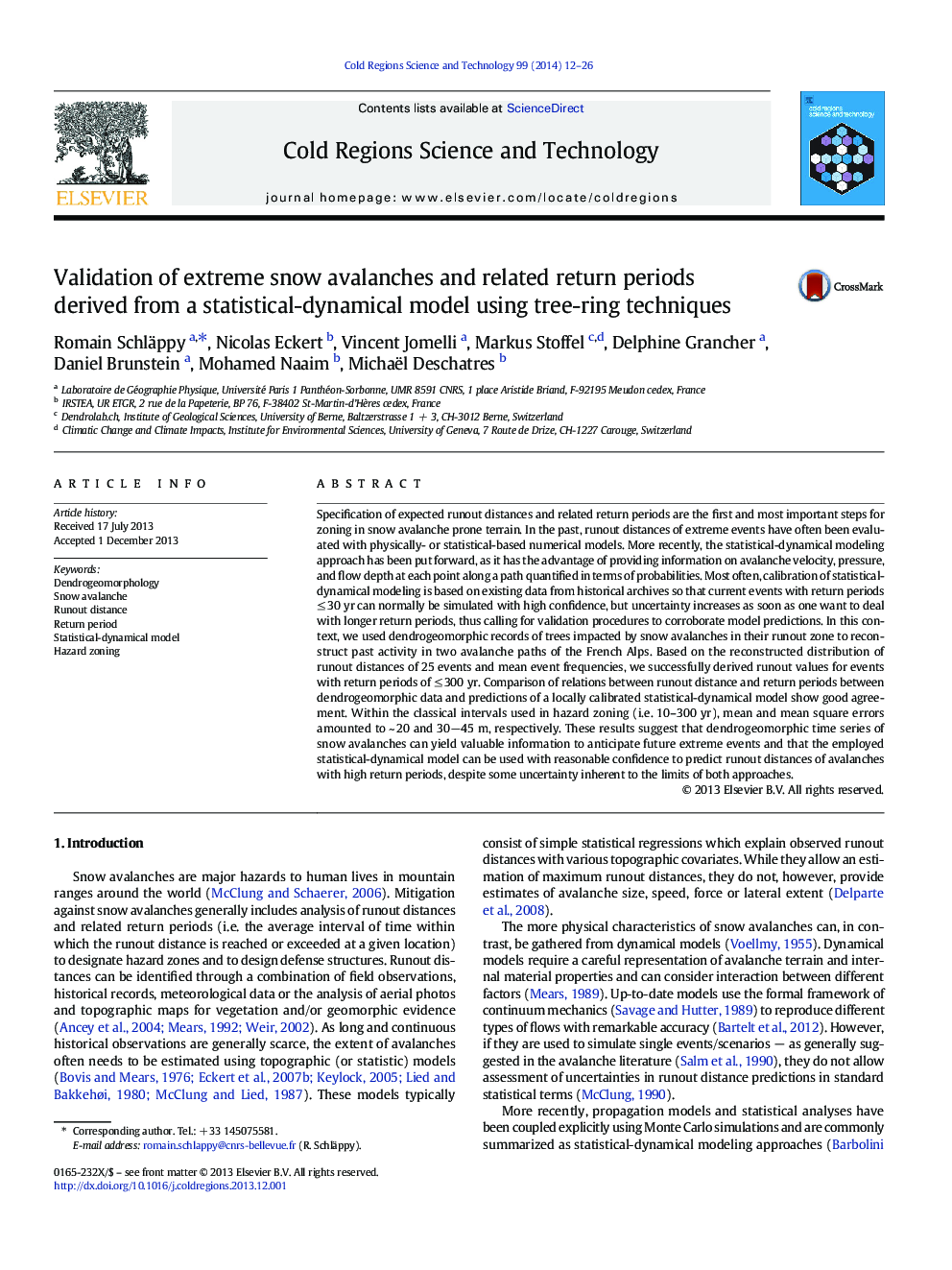| کد مقاله | کد نشریه | سال انتشار | مقاله انگلیسی | نسخه تمام متن |
|---|---|---|---|---|
| 4675788 | 1634463 | 2014 | 15 صفحه PDF | دانلود رایگان |
• Statistical-dynamical avalanche models can simulate current events with high accuracy
• Modeling procedures need to be validated with archival data to improve results
• Runout distances and return periods can be reconstructed best with tree-ring series
• Good agreement between simulated runout distances and patterns of disturbed trees
• Dendrogeomorphic data are extremely valuable data for avalanche hazard zoning
Specification of expected runout distances and related return periods are the first and most important steps for zoning in snow avalanche prone terrain. In the past, runout distances of extreme events have often been evaluated with physically- or statistical-based numerical models. More recently, the statistical-dynamical modeling approach has been put forward, as it has the advantage of providing information on avalanche velocity, pressure, and flow depth at each point along a path quantified in terms of probabilities. Most often, calibration of statistical-dynamical modeling is based on existing data from historical archives so that current events with return periods ≤ 30 yr can normally be simulated with high confidence, but uncertainty increases as soon as one want to deal with longer return periods, thus calling for validation procedures to corroborate model predictions. In this context, we used dendrogeomorphic records of trees impacted by snow avalanches in their runout zone to reconstruct past activity in two avalanche paths of the French Alps. Based on the reconstructed distribution of runout distances of 25 events and mean event frequencies, we successfully derived runout values for events with return periods of ≤ 300 yr. Comparison of relations between runout distance and return periods between dendrogeomorphic data and predictions of a locally calibrated statistical-dynamical model show good agreement. Within the classical intervals used in hazard zoning (i.e. 10–300 yr), mean and mean square errors amounted to ~ 20 and 30−45 m, respectively. These results suggest that dendrogeomorphic time series of snow avalanches can yield valuable information to anticipate future extreme events and that the employed statistical-dynamical model can be used with reasonable confidence to predict runout distances of avalanches with high return periods, despite some uncertainty inherent to the limits of both approaches.
Journal: Cold Regions Science and Technology - Volume 99, March 2014, Pages 12–26
